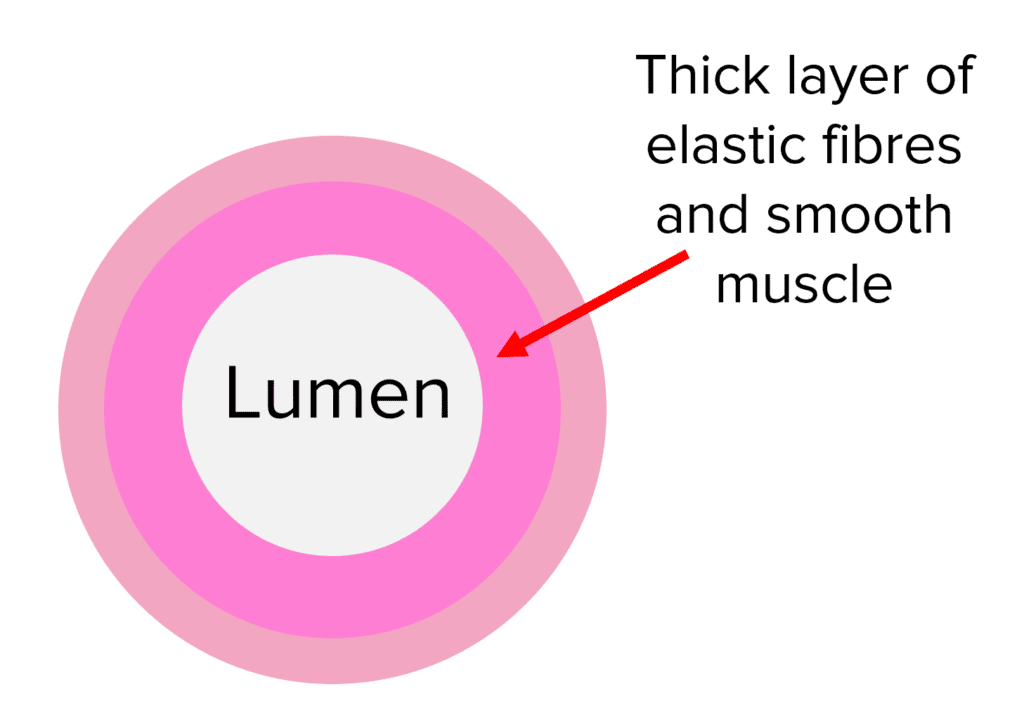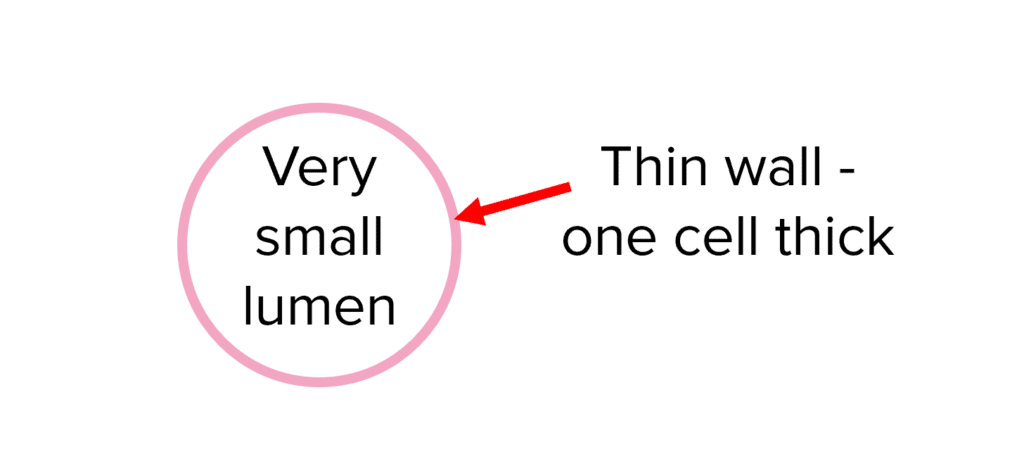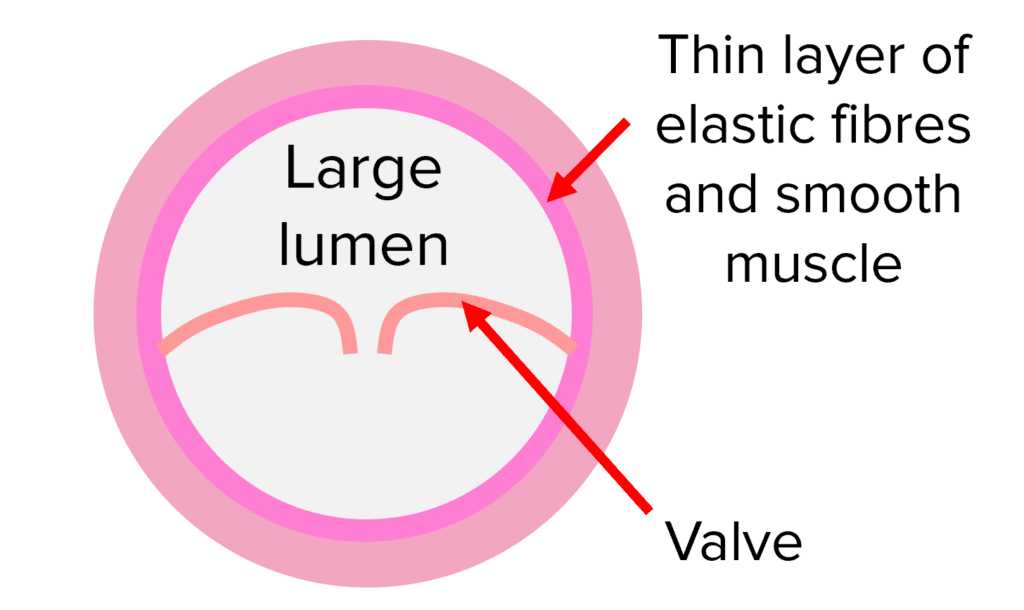Circulatory System
Circulatory System Revision
Double Circulatory System
Humans have a double circulatory system which means it is made up of two loops that are joined together.
- The heart pumps deoxygenated blood to the lungs to be oxygenated and then it returns to the heart.
- The heart then pumps the oxygenated blood around the rest of the body, to supply respiring cells with everything they need, before returning again when deoxygenated.
Blood is transported round the circulatory system by different types of blood vessels that are all adapted for their functions.
Arteries
Arteries (such as the aorta, pulmonary artery and coronary artery) carry blood away from the heart and branch off into capillaries.

The blood is pumped out of the heart at high pressures in order to transport the blood all around the body. Arteries are adapted to be able to withstand this pressure and maintain it when the heart is relaxed. They have thick walls made up of elastic fibres and smooth muscle and a relatively narrow lumen.
The elastic fibres relax when the heart pumps blood, allowing the artery to expand and blood to flow through at high pressures. The elastic fibres contract when the heart is not pumping blood to narrow the lumen of the artery and maintain the high blood pressure.
Capillaries
Capillaries are tiny vessels that surround cells and enable them to exchange different substances with the blood.

They supply the cells with oxygen and glucose for respiration and remove waste products such as carbon dioxide and urea.
Their permeable walls are only one cell thick which provides a short distance for diffusion between the blood and the cells and therefore increases the rate of diffusion.
Veins

Veins, such as the vena cava and pulmonary vein, take blood from capillaries back to the heart.
This blood is under low pressure so the walls of veins are not as thick as the walls of arteries.
They have a large lumen to allow the blood to flow despite the low pressure and valves which help to keep the blood flowing in the right direction (prevent backflow).
Rate of Blood Flow
You may be asked to calculate the rate of blood flow through a vessel. Remember rate is just how much something has changed in a given time.
To calculate the rate of blood flow you should divide the volume of blood by the time taken for it to pass.
Example: In 6 \text{ minutes}, 672\text{ ml} of blood flows through a vein. Calculate the rate of blood flow through the vein.
\text{Rate of blood flow}= \dfrac{\text{Volume of blood}}{\text{Time taken}}\text{Rate of blood flow}= \dfrac{672}{6}= 112 \text{ ml/min}
Circulatory System Example Questions
Question 1: Humans have a double circulatory system. Explain what this means.
[3 marks]
The circulatory system is made up of 2 loops/circuits joined together.
In the first loop the heart pumps blood to the lungs to be oxygenated and then it returns to the heart.
In the second loop the heart pumps blood all around the body to supply the cells so they are able to exchange substances with blood before returning to the heart.
Question 2: Describe and explain the differences between the walls of arteries and veins.
[2 marks]
Arteries have very thick walls made of elastic fibres and smooth muscle to withstand and maintain the high blood pressure generated from the heart.
The blood pressure is much lower in veins so they have much thinner walls.
Question 3: In which blood vessels will you find valves and what are their purpose?
[2 marks]
Valves are found in veins.
They make sure the blood only flows in one direction/ prevent backflow.
Circulatory System Worksheet and Example Questions
Heart and Blood Vessels Questions
GCSEOfficial MME
MME Premium Membership
£19.99
/monthLearn an entire GCSE course for maths, English and science on the most comprehensive online learning platform. With revision explainer videos & notes, practice questions, topic tests and full mock exams for each topic on every course, it’s easy to Learn and Revise with the MME Learning Portal.
Sign Up Now



